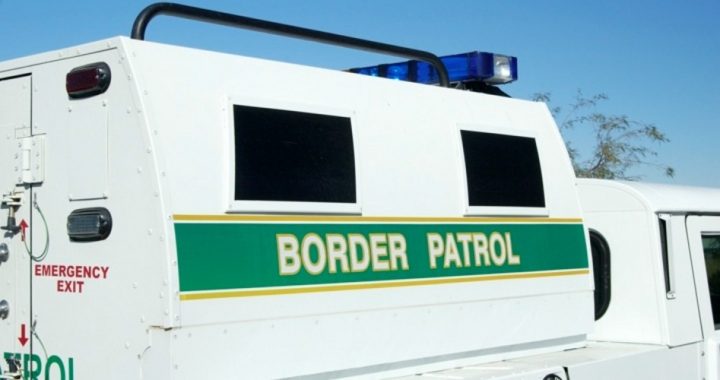
Performance measures for a new U.S. Border Patrol security plan have not effectively been established, a federal auditor said Tuesday, as government officials presented its 2012 Strategic Plan for border security. Rebecca Gambler, Acting Director for the Government Accountability Office’s Homeland Security and Justice team, posed concerns about how the agency’s performance would be evaluated, in a testimony before the House Homeland Security subcommittee on Border and Maritime Security.
Border Patrol is part of Customs and Border Protection — which is an extension of the Department of Homeland Security (DHS) — and its 2012 strategy updates a previous plan established in 2004. However, while some lawmakers hailed support for the plan, Ms. Gambler was hesitant to endorse the new strategy, stressing that “outcome-oriented measures” are critical in order to effectively evaluate the agency’s overall performance.
Border Patrol Chief Michael Fisher told the panel during Tuesday’s hearing that the new plan targets and delivers resources to areas that are most inclined to harbor terrorist and drug-related activities. “The Border Patrol’s strategic plan marks an important point in the growth and development of the U.S. Border Patrol and establishes an approach that is tailored to meet the challenges of securing a 21st century border against a variety of dynamic threats and dangerous adversaries,” Fisher affirmed in a written testimony. Among the agency’s primary concerns, Fisher outlined in the new initiative, are:
- Preventing terrorists and terrorist weapons from entering the United States between the ports of entry (POEs) with improved and focused intelligence-driven operations, as well as operational integration, planning and execution with law enforcement partners;
- Effectively managing risk through the introduction and expansion of sophisticated tactics, techniques and procedures that include methods of detecting illegal entries such as using “change detection” techniques, increased mobile response capabilities and expanded use of specially trained personnel with “force multiplying” skills and abilities;
- Disrupting and dismantling transnational criminal organizations (TCOs) by targeting enforcement efforts against the highest priority threats and expanding programs that reduce smuggling and crimes associated with smuggling; and
- Increasing and sustaining the certainty of apprehension for illegal crossings between the POEs by expanding Border Patrol’s situational awareness and employing a comprehensive and integrated “whole-of-government” approach.
Rep. Henry Cuellar (D-Texas) questioned Mr. Fisher about the agency’s timeline for producing measurable results. “Yes sir, we’re looking at the beginning of the next calendar year,” Fisher retorted, “although I should also mention it’s not like we’re just erasing everything that we’ve done and trying to come up with new things.”
Ranking member of the Homeland Security Committee, Rep. Bennie Thompson (D-Miss.), was skeptical about the plan’s evaluation process, asking if the new strategy would be “quantifiable.” Gambler piped in, asserting that the agency “has not released performance goals and measures for assessing how effective it will be at implementing its new strategic plan — and that’s something that the Border Patrol will be focusing on going forward, and has efforts underway right now to develop new or additional measures.” She continued:
In the interim the Border Patrol is using the number of apprehensions on the southwest border as its primary performance measure, which is being reported out in the department’s annual performance report.
That kind of measure has some useful information in that it provides insights into the activity levels of the Border Patrol — how many apprehensions they’re making — but what’s really important, and really key going forward, is for the Border Patrol and the department to move more towards outcome-oriented measures that would allow the department, the Congress and the public to really get a sense to how effective the Border Patrol’s efforts are.
Gambler also noted that the agency no longer utilizes measure of miles under “operational control” — meaning, border areas where the government can effectively locate and interdict unauthorized activity — to evaluate the performance of its border security. Consequently, the agency has become less accountable, as it significantly reduced the dissemination of program results delivered to Congress and taxpayers.
Homeland Security Secretary Janet Napolitano has been pledging for the past year to institute a Border Conditions Index “to comprehensively measure security along the Southwest border and the quality of life in the region.” But critics have remained skeptical of any new measurement index that does not evaluate the number of illegal immigrants who actually cross the U.S.-Mexican border and escape into the country.
Shawn Moran, a San Diego Border Patrol agent and vice president of the National Border Patrol Council union, for example, said he was hesitant to endorse Napolitano’s index, which she unveiled last year. “Any sort of metric that DHS comes up with I think is — I’m going to be skeptical about from the get go,” Moran told CNSNews.com last May. “Until they actually address the problem of the people who get past us and find a real way to measure that, they’re never going to have a real picture of what’s going on, on the border.”



